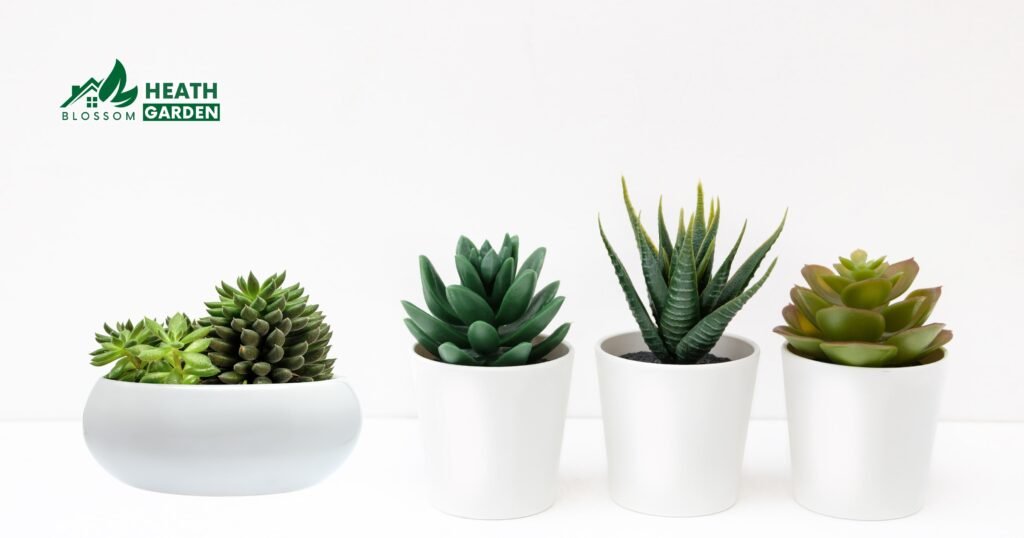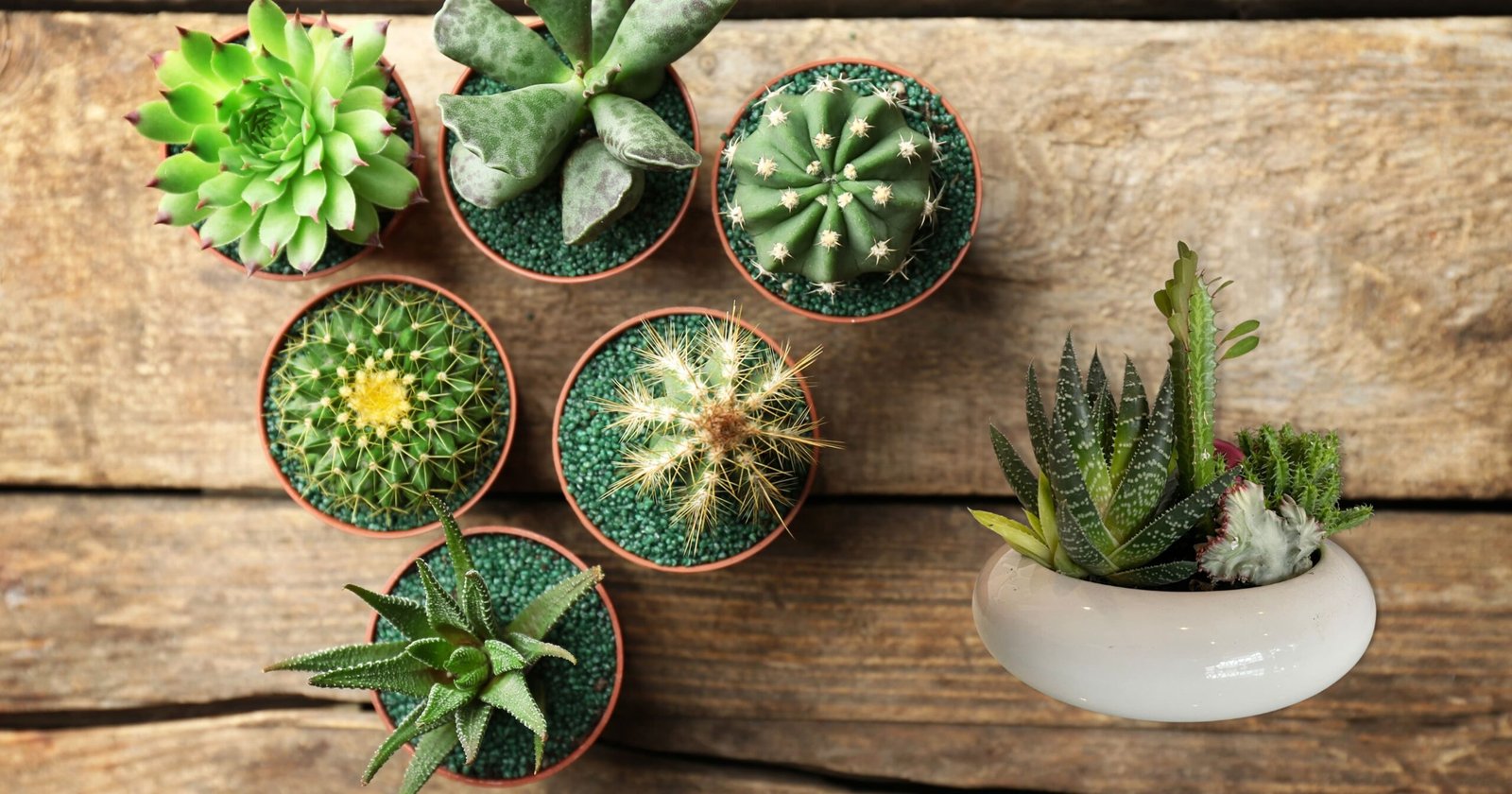Are Succulents Poisonous to Humans? Fortunately, the majority of succulents are not poisonous to humans. However, two types of potentially toxic succulents can be harmful if touched or ingested: Euphorbia succulents and Kalanchoe succulents.
Most succulents are not harmful to humans. They have gained popularity for their easy maintenance, diverse shapes, and colorful blooms.
However, a few species, such as Euphorbias, contain a milky sap that can cause skin irritation on contact or digestive distress if ingested. Therefore, it’s essential to identify the succulent species you’re handling and to take necessary precautions, particularly if there are children or pets in the household.
Introduction
Succulents, with their diverse and attractive forms, have gained popularity as indoor and outdoor ornamental plants. However, as with many plants, questions about their potential toxicity to humans arise.
In this article, we will explore whether succulents are poisonous to humans, providing a comprehensive understanding of the potential risks associated with certain succulents and the safety measures to mitigate these risks.

Are Succulents Poisonous to Humans?
Succulents, in general, are not highly toxic to humans. Most succulents, if ingested in small quantities, typically cause mild to moderate gastrointestinal discomfort, but severe poisoning is rare.
However, it’s important to note that not all succulents are created equal, and some can indeed pose risks to humans, especially if ingested or if there is skin contact.
Types of Toxic Succulents
Are Succulents Poisonous to Humans:
Euphorbia Species
Certain species of Euphorbia, such as Euphorbia milii (Crown of Thorns), contain a milky, latex-like sap that can cause skin irritation and, if ingested, gastrointestinal issues such as nausea, vomiting, and diarrhea.
Kalanchoe Species
Kalanchoe species, including Kalanchoe daigremontiana (Mother of Thousands) and Kalanchoe tomentosa (Panda Plant), contain bufadienolides, which can be toxic if ingested in large amounts, causing gastrointestinal upset and, in severe cases, heart rhythm abnormalities.
Crassula ovata (Jade Plant)
While the Jade Plant is generally considered non-toxic, ingestion can cause mild gastrointestinal discomfort in some individuals.
Sempervivum (Hens and Chicks)
Sempervivum plants are considered low in toxicity; however, ingestion may cause mild gastrointestinal upset.
Aloe Vera
Although Aloe Vera is renowned for its medicinal properties, particularly for skin care and minor burns, certain parts of the plant can be harmful when ingested.
The outer leaf pulp of the plant contains aloin, a compound with laxative properties that can cause digestive discomfort, including nausea and diarrhea.
Hence, it’s advisable to only consume the plant directly from the garden with proper preparation and knowledge.

Potential Risks and Symptoms
Skin Irritation
Contact with the sap or juices of certain succulents, like Euphorbia species, can cause skin irritation, redness, itching, or blistering in sensitive individuals.
Gastrointestinal Discomfort
Ingestion of certain succulents, especially those with toxic compounds like bufadienolides found in Kalanchoe species, can lead to symptoms such as nausea, vomiting, abdominal pain, and diarrhea.
Allergic Reactions
Some individuals might have allergic reactions to succulents, leading to skin rashes, hives, or respiratory issues, although such reactions are relatively rare.
Eye Irritation
Contact with sap or juices from succulents can cause eye irritation, redness, and discomfort.
Poisoning in Pets
While this article primarily focuses on the impacts on humans, it’s important to note that certain succulents can pose significant risks to pets when ingested.
Cats and dogs may experience more severe symptoms, including drooling, loss of appetite, weakness, and, in rare cases, seizures.
If you suspect your pet has ingested a potentially toxic succulent, immediate veterinary assistance should be sought.

Safety Measures and Precautions
Handle with Care
Always handle succulents carefully, especially those known to produce sap that can cause skin or eye irritation. Wear gloves and protective eyewear if necessary.
Keep Out of Reach
If you have young children or pets at home, ensure that potentially toxic succulents are placed out of their reach to prevent accidental ingestion.
Educate Yourself
Familiarize yourself with the types of succulents you have, particularly their potential toxicity, and take appropriate precautions.
Seek Medical Attention
If accidental ingestion or significant skin contact occurs, seek medical help immediately. Contact a poison control center or your local emergency number.
Proper Plant Identification
Make sure you accurately identify the succulents you have to determine if they are potentially toxic or harmful to humans. Seek guidance from plant experts or reputable sources.
Safe Disposal
When disposing of succulents, particularly those of the Euphorbia family, it’s crucial to do so in a manner that prevents contact with their sap.
Ensure that you wear gloves and long sleeves, and carefully wrap the plant in a newspaper or a plastic bag. Avoid cutting or breaking the plant to prevent sap exposure.
Dispose of the plant in a sealed container to prevent contact with pets or wild animals.
More about Succulents and Their Care
Succulents are plants that have adapted to survive arid conditions by developing tissues that store water.
Their unique forms and myriad colors make them popular as decorative plants.
However, succulents require a different care regimen compared to other houseplants due to their unique water-storage capabilities and preference for dry conditions.
Watering
Overwatering is one of the most common causes of succulent death. These plants prefer a ‘soak and dry’ method, where the soil is thoroughly soaked and then allowed to dry out completely before the next watering.
Light
Succulents require plenty of sunlight. A south- or east-facing window is ideal. If sufficient natural light isn’t available, grow lights can be used.
Soil
Because they’re adapted to arid conditions, succulents prefer well-draining soil. A special succulent or cacti mix is often the best choice.
Potting
The pot or container used for succulents should have good drainage holes to prevent water from sitting at the bottom, which can cause root rot.
Propagation
Many succulents can be easily propagated from leaves or cuttings, making it easy to grow your succulent collection.
Remember, while succulents can pose some risks, as outlined earlier in this article, they’re generally safe.
With the right precautions and proper care, you can enjoy the beauty of these unique plants while ensuring the safety of everyone in your home.
Conclusion
Are Succulents Poisonous to Humans? Succulents, as a group, are generally not highly poisonous to humans. Most succulents, when handled with care and not ingested, pose minimal risks. However, it’s essential to be aware of specific succulents that contain toxic substances and can cause skin irritation or mild gastrointestinal discomfort if ingested. By understanding these potential risks and following safety measures and precautions, you can enjoy your succulents safely and without undue concern for your health or the health of those around you.
FAQs
What are poisonous succulents to pets?
Several succulents are toxic to pets when ingested. Some commonly found harmful succulents include certain types of Euphorbias, Jade Plant, Aloe Vera, Snake Plant, Sago Palm, and Kalanchoe. Symptoms of poisoning can range from vomiting and diarrhea to more serious issues such as tremors and changes in behavior. If you suspect your pet has ingested a harmful succulent, seek veterinary attention immediately.
Are Succulents Poisonous? What You Need To Know
In conclusion, succulents offer a captivating blend of resilience and beauty, making them cherished houseplants. While some species come with risks, appropriate handling and awareness can mitigate these. It’s crucial to familiarize yourself with the specific characteristics of your succulents, especially regarding potential toxicity. With this knowledge, you can fully enjoy the charm of these unique plants while ensuring a safe environment for all.
Are Succulent Plants Poisonous To Cats, Dogs, or Humans?
While most succulents are not poisonous to cats, dogs, or humans, some can cause problems. For instance, the sap in Euphorbias can irritate skin and eyes, and if ingested, Aloe Vera can cause nausea and other digestive issues. Therefore, it’s always wise to keep these plants out of reach of pets and children and handle them with care to avoid any potential issues.
Are succulents poisonous?
In general, succulents are not poisonous, but certain varieties like Euphorbias and Aloe Vera can cause health issues if ingested or if their sap comes into contact with skin or eyes. Therefore, it’s crucial to identify your plants accurately, handle them with care, and keep them out of reach of pets and children. When in doubt, consult a plant expert or a vet.

